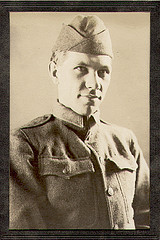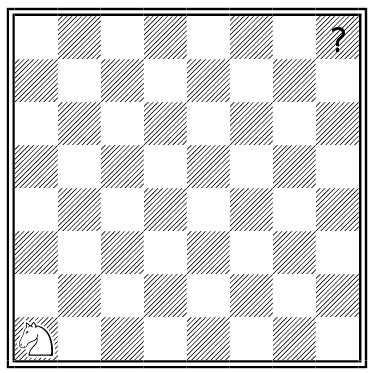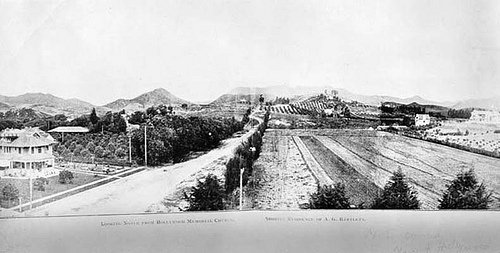“The desire for safety stands against every great and noble enterprise.” — Tacitus
Giving Pause

Harold Ross personally edited every issue of the New Yorker between 1925 and 1951. Unfortunately, he was a fiend for commas, peppering every sentence until all possible ambiguity was removed. An example from 1948:
“When I read, the other day, in the suburban-news section of a Boston newspaper, of the death of Mrs. Abigail Richardson Sawyer (as I shall call her), I was, for the moment, incredulous, for I had always thought of her as one of nature’s indestructibles.”
His writers hated this. James Thurber revised Wordsworth:
She lived, alone, and few could know
When Lucy ceased to be,
But, she is in her grave, and, oh,
The difference, to me.
And E.B White wrote, “Commas in the New Yorker fall with the precision of knives in a circus act, outlining the victim.”
But Ross was immovable. “We have carried editing to a very high degree of fussiness here,” he acknowledged to H.L. Mencken, “probably to a point approaching the ultimate. I don’t know how to get it under control.”
So on it went. A correspondent once asked Thurber why Ross had added the comma to the sentence “After dinner, the men went into the living-room.” Thurber responded, “This particular comma was Ross’s way of giving the men time to push back their chairs and stand up.”
A Riding Tour

Is it possible to move the knight from a1 to h8, visiting every square of the chessboard once?
In a Word
patrizate
v. to imitate one’s father
father-better
adj. surpassing one’s father
father-waur
adj. worse than one’s father
Camera Placement

That’s the intersection of Hollywood and Vine in 1906.
Seven years after this photo was taken, Cecil B. DeMille was searching for a western location to film The Squaw Man. He sent this telegram to his New York partners:
FLAGSTAFF NO GOOD FOR OUR PURPOSE. HAVE PROCEEDED TO CALIFORNIA. WANT AUTHORITY TO RENT BARN IN PLACE CALLED HOLLYWOOD FOR $75 A MONTH.
Sam Goldwyn responded:
AUTHORIZE YOU TO RENT BARN BUT ON MONTH-TO-MONTH BASIS. DON’T MAKE ANY LONG COMMITMENT.
Years later Marilyn Monroe would write, “Hollywood’s a place where they’ll pay you a thousand dollars for a kiss and fifty cents for your soul.”
Lay of the Deserted Influenzaed
Doe, doe!
I shall dever see her bore!
Dever bore our feet shall rove
The beadows as of yore!
Dever bore with byrtle boughs
Her tresses shall I twide–
Dever bore her bellow voice
Bake bellody with bide!
Dever shall we lidger bore,
Abid the flow’rs at dood,
Dever shall we gaze at dight
Upon the tedtder bood!
Ho, doe, doe!
Those berry tibes have flowd,
Ad I shall dever see her bore,
By beautiful! by owd!
Ho, doe, doe!
I shall dever see her bore,
She will forget be id a bonth,
(Bost probably before)–
She will forget the byrtle boughs,
The flow’rs we plucked at dood,
Our beetigs by the tedtder stars.
Our gazigs at the bood.
Ad I shall dever see agaid
The Lily and the Rose;
The dabask cheek! the sdowy brow!
The perfect bouth ad dose!
Ho, doe, doe!
Those berry tibes have flowd –
Ad I shall dever see her bore,
By beautiful! by owd!!
— Henry Cholmondeley-Pennell, Puck on Pegasus, 1868
The Collatz Conjecture
Think of any whole number greater than zero.
- If the number is even, divide it by two.
- If the number is odd, triple it and add one.
If you apply these rules repeatedly, will you always reach 1? Surprisingly, no one knows.
Paul Erdos said, “Mathematics is not yet ready for such confusing, troubling, and hard problems.”
Overheard

Elphinston: What, have you not read it through?
Johnson: No, Sir, do you read books through?
— Life of Samuel Johnson, 1791
Slippery When Wet
While M.V. Tancred was riding out a typhoon in Kobe Bay in early October 1954, E. Gherzi and his companions noted something strange: The waves had steps.
[T]here were a number of well-defined steps, carved so to say into the water just like the steps of a ladder, starting from the trough of the wave up to about half its height. Although the waves were moving quickly, the steps remained, steadily extending parallel to each other for one or two metres in length. There were at times as many as twenty of these nicely successive steps cut into the body of the wave. We tried to photograph them, but the very poor visibility and the fast motion of the waves resulted only in a blurred print.
— “Peculiar Stratified Shape of Typhoon Waves,” Nature, Feb. 12, 1955
Lonely Words

What is gopher wood? Noah used it to build his ark, but there’s no other reference to it in the Bible.
Similarly, no one’s quite sure what a kankedort is. It appears in one passage in Chaucer’s Troilus and Criseyde:
Was Troilus nought in a kankedort,
That lay, and myghte whisprynge of hem here,
And thoughte, “O Lord, right now renneth my sort
Fully to deye, or han anon comfort!”
The Oxford English Dictionary defines it helplessly as an awkward situation or affair and says it’s “of unascertained etymology.”
See Hapax Legomenon.
